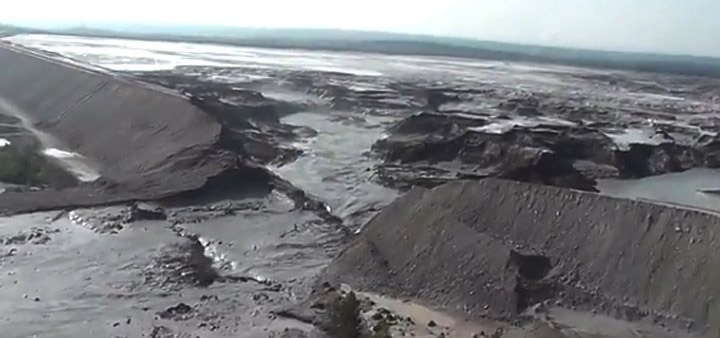Today I’ll attempt to cut through the speculation and fear-mongering that have swirled around the Mount Polley mine dam breach and tell you what’s really known.
As Black Press and our local publication the Williams Lake Tribune reported before and after the incident, the mine reopened in 2005 after a four-year shutdown and was expanding its operation, including the tailings pond. Rising metal prices helped put 380 unionized employees plus management back to work. Most are now working on rebuilding the tailings dam and cleaning up the spill site.
Imperial Metals applied earlier this summer for an increase in water discharge, and was waiting for B.C. government approval at the time of the Aug. 4 dam breach. This was to be the second amendment to a water release permit issued when the mine started up in 1997. It has had a surplus of water due to rain and snow accumulation since it opened (under an NDP government, for those who want to turn everything into a political corruption story).
The reason water release has been allowed is that in the absence of acid-producing rock, metal contamination of water is minimized. Imperial Metals’ routine tests with rainbow trout in undiluted tailings pond water have now been confirmed by environment ministry results, and water and fish from all but the immediate spill area have been cleared for human consumption.
For an example of acid mine drainage, look up the Britannia Mine Museum, now a reclaimed national historic site with a water treatment plant built to function for hundreds of years. Before that, acid-produced toxic metal pollution drained from the abandoned mine into Howe Sound for decades.
Early tests at Mount Polley indicate that this sort of long-term water remediation may not be required. The initial pulse of suspended sediment didn’t last long enough to affect fish in most of Quesnel Lake, much less the Fraser River system. Sediment tests show elevated iron and copper, with “leachability” results to come. Containment and removal will have to be undertaken.
On May 24 of this year, Mount Polley received the first high water warning in its history. This was not a “breach,” contrary to some reports. The latest water permit application and work to raise the dam took place after that.
It’s not difficult to deduce from aerial photos what was happening as mine management found ways to extend operation, including an underground phase. The pond was filling up with pulverized rock, reducing its capacity to hold water. Most of the accumulation is still there for all to see, as is the cross-section of the dam so abruptly exposed in the wee hours of Aug. 4.
It may be months before inspectors and geotechnical engineers can determine the cause of the breach, which occurred with the water level 2.5 metres below the top of the dam, well within permit specifications. Either the design of the earthworks was not adequate, or it was not adequately followed.
TV crews have packed up and left, after sucking out the initial drama and retailing every sensational claim they could find. Tourism operators are pleading with people not to turn their backs on the region after that influx of visitors.
Professional environmentalists are now exploiting Mount Polley as part of their campaign to de-industrialize B.C. A key propaganda tool is a single picture of a salmon with skin removed from part of its dorsal region.
No such fish has been produced, and a single rainbow trout collected the day of the spill is the only confirmed aquatic casualty.
Tom Fletcher is legislature reporter and columnist for Black Press. Twitter: @tomfletcherbc
